 5/9/2014 - Another successful Hungarian Ball! The 9th Annual Hungarian Charity Ball returned to Washington and raised funds for worthy causes... The American Hungarian Federation and the
Hungarian Scouts of Washington sponsor the Jótékonysági Est (Benefit Event) to support educational and charitable programs. This year's event returned to the Sheraton Premiere at
Tyson's Corner. Over the past decade, it has raised tens of thousands of dollars for worthy causes 5/9/2014 - Another successful Hungarian Ball! The 9th Annual Hungarian Charity Ball returned to Washington and raised funds for worthy causes... The American Hungarian Federation and the
Hungarian Scouts of Washington sponsor the Jótékonysági Est (Benefit Event) to support educational and charitable programs. This year's event returned to the Sheraton Premiere at
Tyson's Corner. Over the past decade, it has raised tens of thousands of dollars for worthy causes  both in the United States and throughout the Hungarian communities in the Carpathian Basin. The proceeds from the 9th Annual event will be applied to help support Hungarian Culture and Students of Hungarian descent through scholarships and internships via the Hungarian-American Educational and Cultural Fund (AMOKA); a fund to establish a Hungarian Cultural Center in the Washington, D.C. Metropolitan area; and the Wounded Warrior Project. both in the United States and throughout the Hungarian communities in the Carpathian Basin. The proceeds from the 9th Annual event will be applied to help support Hungarian Culture and Students of Hungarian descent through scholarships and internships via the Hungarian-American Educational and Cultural Fund (AMOKA); a fund to establish a Hungarian Cultural Center in the Washington, D.C. Metropolitan area; and the Wounded Warrior Project.
 The Masters of Ceremonies, Cmdr. Istvan Hargitai (USN) and Rev. Judit Mayer, opened the Ball, thanked guests and recognized the Ball Chairperson, Erika Fedor, and the Ball Committee, whose hard work and vision made this 9th annual event not only possible, but highly successful. The Masters of Ceremonies, Cmdr. Istvan Hargitai (USN) and Rev. Judit Mayer, opened the Ball, thanked guests and recognized the Ball Chairperson, Erika Fedor, and the Ball Committee, whose hard work and vision made this 9th annual event not only possible, but highly successful. 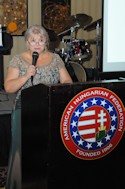 Cmdr. Hargitai also reflected on his own work as a doctor for the US Navy and the physical and emotional sacrifices of brave soldiers returning from abroad and thanked the Federation for its support of the Wounded Warriors program. Cmdr. Hargitai also reflected on his own work as a doctor for the US Navy and the physical and emotional sacrifices of brave soldiers returning from abroad and thanked the Federation for its support of the Wounded Warriors program.
The Ball Committee Chair, and AHF Social Committee Chair, Erika Fedor, welcomed guests, officers of the Federation and Scouts. She introduced AHF National President, Frank Koszorus, Jr., who recalled AHF's work and its support for education and issues affecting the community and focused on the need for the next generation of leaders to emerge to lead the Federation in the next "Century of Service." Excerpts below:
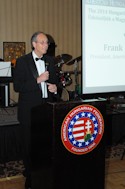 Now, I would like everyone who is 35 years old or younger to please stand. Ladies and Gentlemen, you are looking at our next generation of leaders, and on behalf of the American Hungarian Federation I would like to thank them for participating and coming this evening. As you know, our Federation is more than 100 years old with an extraordinarily rich tradition of service to our community – a tradition and history matched by no one. It is truly a Hungarian American institution. The breadth of the Federation’s activities can be viewed on our website. Let me just suggest to those who are standing that you can choose any number of such activities to participate in and we look forward to your involvement. Now, I would like everyone who is 35 years old or younger to please stand. Ladies and Gentlemen, you are looking at our next generation of leaders, and on behalf of the American Hungarian Federation I would like to thank them for participating and coming this evening. As you know, our Federation is more than 100 years old with an extraordinarily rich tradition of service to our community – a tradition and history matched by no one. It is truly a Hungarian American institution. The breadth of the Federation’s activities can be viewed on our website. Let me just suggest to those who are standing that you can choose any number of such activities to participate in and we look forward to your involvement.
- Are interested in helping to establish a Magyar Haz – help us!
- Are you inclined to write and publish articles on current events affecting Hungary and Hungarians – we welcome you!
- Do you want to promote the protection of Hungarian minorities – your involvement could be crucial!
- Do you agree that commemorating historical events, such as the 1956 Hungarian Revolution, is important – we welcome your input!
- Do you want to help the victims of natural disasters (flooding) – join our efforts!
- Are you interested in preserving Hungarian culture and history by, for example, placing a bust of Lajos Kossuth in the Capitol or the statue of George Washington in Budapest – you can contribute!
I could go on and fill the hour but suffice it to say, your enthusiastic leadership will ensure that the Federation will be around for another 100 years to proudly and selflessly serve its community. Of course, this doesn’t let those of you who are over 35 years old off the hook – our community needs and appreciates everyone’s support and active participation. We’ll leave all of that for tomorrow. Now let’s let our hair down and have fun."
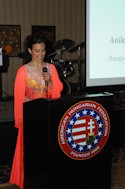 Young Scout Leaders Anikó Tóth & Bert Kőlüs addressed the audience and thanked them for their support.
The
Magyar Cserkészszövetség, the primary national Scouting
organization of Hungary, was founded in 1912.Hungary was a founding member of the World Scout Bureau in 1922 and later
was a founding member of the World Association of Girl Guides and Girl
Scouts, Young Scout Leaders Anikó Tóth & Bert Kőlüs addressed the audience and thanked them for their support.
The
Magyar Cserkészszövetség, the primary national Scouting
organization of Hungary, was founded in 1912.Hungary was a founding member of the World Scout Bureau in 1922 and later
was a founding member of the World Association of Girl Guides and Girl
Scouts, 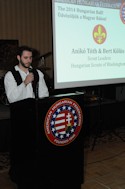 WAGGGS, which was in fact established in Parád, Hungary,
in 1928. However, because of the Communist Regime in Hungary, couldn't become a member of the
World Organization of the Scout Movement until 1990, after the transition to democracy. WAGGGS, which was in fact established in Parád, Hungary,
in 1928. However, because of the Communist Regime in Hungary, couldn't become a member of the
World Organization of the Scout Movement until 1990, after the transition to democracy.
Next, Rev. Judit Mayer introduced Bryan Dawson, AHF Executive Chairman, who would lead the awards ceremony. He remarked, "Why are we all here tonight? Certainly to enjoy each other's company and to have a good time. But it's more. We are here because we care. I am the lucky one who has the enviable position to say "thank you" on behalf of our community." AHF established the "AHF Service Award" in 2013 to recoginize members of the community, Hungarian and non-Hungarian alike, who have made special, outstanding contributions to the community. This year's recipients were:
-
 Mrs. Irén Hőgye, a long-time supporter of local Hungarian scouting and of the Hungarian Ball.
She is considered one of the "guardians" of the local Hungarian Reformed Church where she and her husband, Laci (who passed away in 2013), served as Elders for decades with Irenke as church Treasurer for 20 years. She was also a docent at the Kennedy Center. Mrs. Irén Hőgye, a long-time supporter of local Hungarian scouting and of the Hungarian Ball.
She is considered one of the "guardians" of the local Hungarian Reformed Church where she and her husband, Laci (who passed away in 2013), served as Elders for decades with Irenke as church Treasurer for 20 years. She was also a docent at the Kennedy Center.
-
 Matthew Shank, Ph.D., President of Marymount University and formerly Dean of the School of Business Administration and professor of Marketing at the University of Dayton. Dr. Shank is active in community and business organizations. He was helped secure accommodations for 25 Hungarian artists, dancers, and musicians visiting from across the Carpathian Basin for the 2013 Smithsonian Folk Life Festival. Matthew Shank, Ph.D., President of Marymount University and formerly Dean of the School of Business Administration and professor of Marketing at the University of Dayton. Dr. Shank is active in community and business organizations. He was helped secure accommodations for 25 Hungarian artists, dancers, and musicians visiting from across the Carpathian Basin for the 2013 Smithsonian Folk Life Festival.
 The AHF Medal of Freedom The AHF Medal of Freedom
Our motto, “Faithful Unto Death,” was taken from a letter written by former Hussar Officer Michael Kováts to Benjamin Franklin. Kovats, a Founding Father of the US Cavalry. He offered his sword in service to the United States and died in battle against the British in Charleston, S.C. in 1779. Trained in Hussar tactics, it was, according to the British, “the best cavalry the rebels ever had.” Just as Kovats’ life and service is celebrated annually by US Military Cadets at the Citadel, the motto reflects AHF virtues, historically ties Hungarians and Americans together and symbolizes Hungarians’ contributions and sacrifices to America’s beginning.
AHF established the Michael Kovats Medal of Freedom to recognize outstanding lifetime achievements and selfless contributions to freedom, democracy, and Hungarian society and culture. This year's recipient was Minister Tamas Fellegi:
 Tamás Fellegi was born in 1956, a few months before the historic uprising. A jurist, political scientist, businessman, professor, husband and father of two, he served as Hungary’s Minister of National Development. Between 1996 and 2000, he led the Legal and Governmental Affairs Division of Hungarian Telecom (MATÁV Rt.). He served as Hungary’s Chief Negotiator with the International Monetary Fund and the European
Union on financial matters. From January to June 2011, he was the President of the European Union’s Energy Ministers’ Council, Climate Policy Ministers’ Council, and Development and Cohesion Funds Council. Tamás Fellegi was born in 1956, a few months before the historic uprising. A jurist, political scientist, businessman, professor, husband and father of two, he served as Hungary’s Minister of National Development. Between 1996 and 2000, he led the Legal and Governmental Affairs Division of Hungarian Telecom (MATÁV Rt.). He served as Hungary’s Chief Negotiator with the International Monetary Fund and the European
Union on financial matters. From January to June 2011, he was the President of the European Union’s Energy Ministers’ Council, Climate Policy Ministers’ Council, and Development and Cohesion Funds Council.
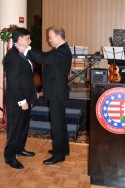 He also served as Special Government Commissioner for Hungarian-Chinese, Hungarian-Russian, and Hungarian-Ukrainian economic relations. Currently, he is Managing Partner of EuroAtlantic Solutions, an international consultancy firm and the President/CEO of The Hungary Initiatives Foundation in Washington, DC. Dr. Fellegi is a Distinguished Fellow at the New Westminster College, Vancouver, Canada. The Hungary Initiatives Foundation is an independent, American non-partisan and non-profit organization committed to strengthening the understanding and cooperation between Hungary and the Unites States of America. The Foundation is the first of its kind in the long history of the Hungarian Diaspora. We are so very grateful for his and the Foundation's work. He also served as Special Government Commissioner for Hungarian-Chinese, Hungarian-Russian, and Hungarian-Ukrainian economic relations. Currently, he is Managing Partner of EuroAtlantic Solutions, an international consultancy firm and the President/CEO of The Hungary Initiatives Foundation in Washington, DC. Dr. Fellegi is a Distinguished Fellow at the New Westminster College, Vancouver, Canada. The Hungary Initiatives Foundation is an independent, American non-partisan and non-profit organization committed to strengthening the understanding and cooperation between Hungary and the Unites States of America. The Foundation is the first of its kind in the long history of the Hungarian Diaspora. We are so very grateful for his and the Foundation's work.
 The Hungarian Scouts (and yes, the Scout Mothers!) were the next highlight in the program. They performed “Magyarbódi Karikázó és Páros Táncok” (including incredible traditional Hungarian folk harmonic choral singing) with choreography by Zsuzsanna Seres. Arpad and Szilvia Fabian-Kovacs performed Transylvanian dances from the Magyar-Palatka, Közép Erdélyi Tájegység (Mezőség) accompanied by the phenomenalm pitch-perfect Hungarian Folk singer from (Kalotaszeg, Erdély), Csenge Konkoly. The Hungarian Scouts (and yes, the Scout Mothers!) were the next highlight in the program. They performed “Magyarbódi Karikázó és Páros Táncok” (including incredible traditional Hungarian folk harmonic choral singing) with choreography by Zsuzsanna Seres. Arpad and Szilvia Fabian-Kovacs performed Transylvanian dances from the Magyar-Palatka, Közép Erdélyi Tájegység (Mezőség) accompanied by the phenomenalm pitch-perfect Hungarian Folk singer from (Kalotaszeg, Erdély), Csenge Konkoly.
 Following the performances, Anna Smith-Lacey, Poltical Attache and Congressional Liaison for the Embassy of Hungary, addressed the audience with a message from the Ambassador, Dr. George Szapary, and her personal thoughts. Like Frank Koszorus earlier, she too emphasized the need for unity, service and reaching out to the next generation, Excerpts below [download full comments]: Following the performances, Anna Smith-Lacey, Poltical Attache and Congressional Liaison for the Embassy of Hungary, addressed the audience with a message from the Ambassador, Dr. George Szapary, and her personal thoughts. Like Frank Koszorus earlier, she too emphasized the need for unity, service and reaching out to the next generation, Excerpts below [download full comments]:
"One of the most important lessons I learned is that being Hungarian is not a matter of geography. It is not a matter of being in the same time zone with Budapest. And as beautiful as our language is, it is not even a matter of speaking Hungarian fluently (I know the scout leaders and Hungarian teachers are disinheriting me now). With the words of Sándor Márai, one of our most venerated 20th century author, who himself spent much of his life outside of Hungary:
“To be Hungarian is not a status. To be Hungarian is an attitude.”
„Magyarnak lenni nem állapot. Magyarnak lenni magatartás.”
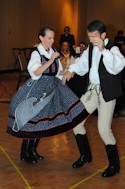 It is an attitude that is reflected in taking kids to scout meetings, arranging for Hungarian lessons, making family trips to Budapest, learning about Mohács and the reform era together, volunteering as organizers for Hungarian balls and making daily sacrifices for maintaining a culture that makes not only us but those around us richer and better citizens of both countries... It is an attitude that is reflected in taking kids to scout meetings, arranging for Hungarian lessons, making family trips to Budapest, learning about Mohács and the reform era together, volunteering as organizers for Hungarian balls and making daily sacrifices for maintaining a culture that makes not only us but those around us richer and better citizens of both countries...
We have a vast cultural legacy with real national heroes. Imagine what the idea of Hungary would be without Jókai, Arany, Petőfi, Vörösmarty, Széchenyi, Deák, Eötvös, Liszt, Görgey, or Kossuth! We are standing on the shoulders of giants.
 And when I say “we,” I mean we Hungarians, irrespective of zip code or blood line or language proficiency. Hungarians are one of the most spread out nations in the world. Partly because we have been “long torn by ill fate” – as Kölcsey says – but partly because we are a nation of innovators and entrepreneurs who like to discover new frontiers and new challenges. And when I say “we,” I mean we Hungarians, irrespective of zip code or blood line or language proficiency. Hungarians are one of the most spread out nations in the world. Partly because we have been “long torn by ill fate” – as Kölcsey says – but partly because we are a nation of innovators and entrepreneurs who like to discover new frontiers and new challenges.
Hopefully you have noticed that more than two decades after the system change, Hungary has come to terms with this fact and there has been a profound paradigm shift in how policy makers think about Hungarians abroad. We no longer think of you, Hungarians in America as a “loss” to the motherland. We rather think of you as a resource, as a bridge, as a value added, as part of a global community that has a land somewhere in the Carpathian basin that will always mean something special and that will always  welcome you and your children. This paradigm shift that the diaspora is an integral part of the Hungarian nation – which is something that was willfully and viciously rejected during the Communist times – is now enshrined in our constitution and is at the core of several new initiatives." [download speech in full] welcome you and your children. This paradigm shift that the diaspora is an integral part of the Hungarian nation – which is something that was willfully and viciously rejected during the Communist times – is now enshrined in our constitution and is at the core of several new initiatives." [download speech in full]
Ms. Smith-Lacey closed her speech with a poem in Hungarian "Who is Hungarian" / Ki a Magyar? by Illyés Gyula. Guests throughout the reception hall and ballroom were also treated with photo displays on Transylvania and the 2013 Smithsonian Folklife Festival
by AHF Ladies' Committee Chair, Dr. Kati Almay.
The evening continued, as usual, with much dancing and fun. Hope to see you next year! - Bryan Dawson
Photos Courtesy Bryan Dawson - www.bryandawson.com
                                                                                                                         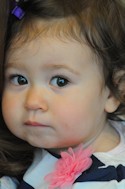  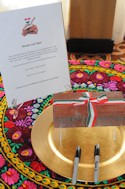   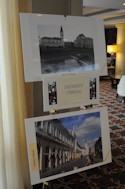 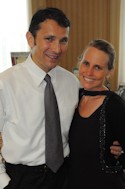 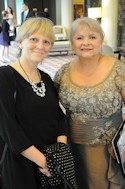 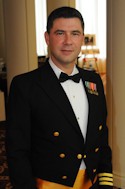 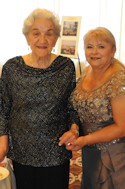 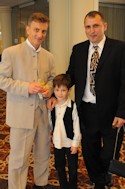  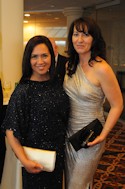   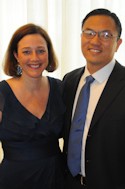 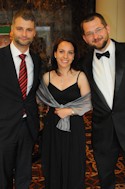  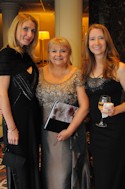 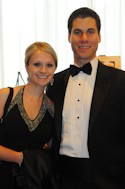 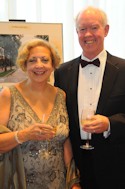   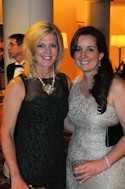 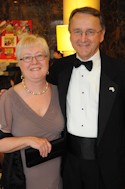    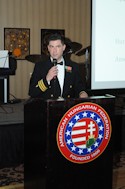 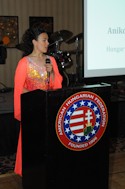 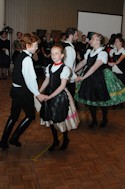 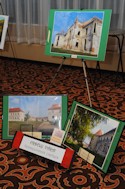    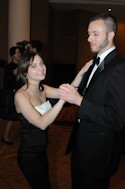 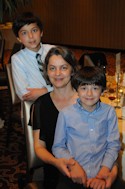 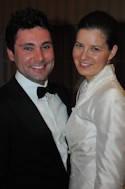 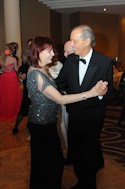 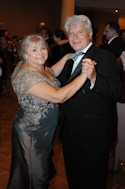 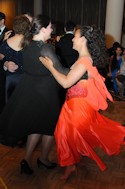 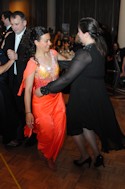 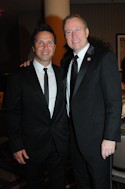 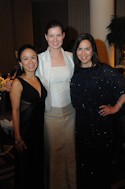  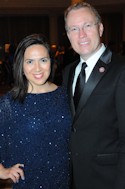 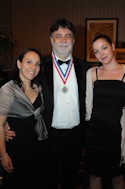  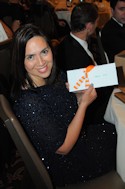  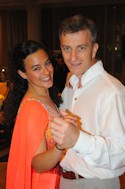 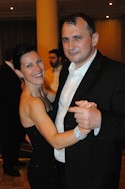 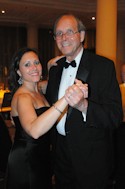  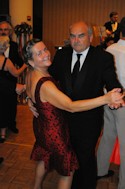 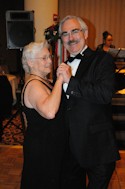 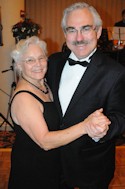  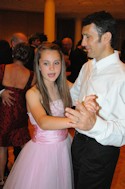  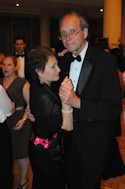
Previous Hungarian Charity Balls:
[<< Back to All AHF News]
[<< Back to All AHF News]
|
Tiszteletbeli Védnökök /
Honorary Committee
- Rev. Imre Bertalan, Executive Director of Bethlen Communities
- The Honorable Tamás Fellegi, President/CEO of the Hungary Initiative Foundation
- The Honorable Congresswoman Marcy Kaptur
- The Honorable Congressman Andy Harris
- The Honorable Dr. János Horváth M.P.
- Hungarian Freedom Fighters Federation
- Maj. Gen. Robert Ivany, Ph.D.
- His Excellency Dr. Géza Jeszenszky, Former Foreign Minister of Hungary and Ambassador to the United States
- The Honorable Annette Lantos, Chairman of the Lantos Foundation for Human Rights and Justice
- Mr. Imre Lendvai-Lintner, Hungarian Scouts in Exteris
- Rev. Judit Mayer, Hungarian Reformed Church
The Honorable Anikó Gaál Schott
- His Excellency György Szapáry, Ambassador of Hungary to the United States
Previous Hungarian Balls Supported:
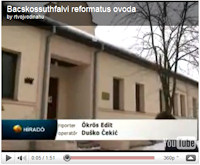 1. The Hungarian Reformed Church Nursery School in Bácskossuthfalva was founded in 2005, this is the ONLY such school recognized by Serbian authorities. Despite the recognition, Serbia has refused to extend any financial support. The school is under serious financial distress and your support is greatly needed and appreciated. See the VIDEO INTERVIEW ( 1. The Hungarian Reformed Church Nursery School in Bácskossuthfalva was founded in 2005, this is the ONLY such school recognized by Serbian authorities. Despite the recognition, Serbia has refused to extend any financial support. The school is under serious financial distress and your support is greatly needed and appreciated. See the VIDEO INTERVIEW ( magyarul). Vojvodina, an integral part of Hungary for over 1000 years, was awarded to the newly formed Yugoslavia
by the French at the "Treaty" of Trianon in 1920 when Hungary lost 2/3 of her territory and 1/3 of
her Hungarian population. Intimidation, large scale evictions and ethnic cleansing, emigration, and fear of self-reporting have official estimates of only 300-350,000 ethnic Hungarians
remaining in the province. Some, however, estimate this number to be double that
since many fear self-reporting as Hungarian exposes them to risk. [read more] about Vojvodina. magyarul). Vojvodina, an integral part of Hungary for over 1000 years, was awarded to the newly formed Yugoslavia
by the French at the "Treaty" of Trianon in 1920 when Hungary lost 2/3 of her territory and 1/3 of
her Hungarian population. Intimidation, large scale evictions and ethnic cleansing, emigration, and fear of self-reporting have official estimates of only 300-350,000 ethnic Hungarians
remaining in the province. Some, however, estimate this number to be double that
since many fear self-reporting as Hungarian exposes them to risk. [read more] about Vojvodina.
2. The Hungarian American Education and Cultural Preservation Fund (Amerikai Magyar Oktatási és Kultúrális Alap (AMOKA) to support a wide variety of programs from scholarships and internships that develop our future leaders to assisting local communities at home and abroad to preserve Hungarian schools and cultural institutions, language, history and traditions. In 2012, the Hungarian Scholarship Fund (HSF) / Magyar Ösztöndíjalap surpassed $400,000.00. Founded by AHF Board Member, Prof. Bela Bognar, the HSF supports students who are economically disadvantaged and live in Hungary and in the lands lost at the Treaty of Trianon which cost Hungary 2/3 of her territory, 1/3 of her ethnic-Hungarian population and vast natural resources. [read more and HELP!]
3. Tőketerebes (Trebišov)
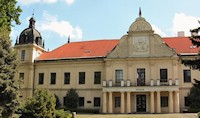 In 2013, the ball contributed funds toward the purchase of diagnostic equipment to support the Lung Ward of Trebišov Hospital (Tőketerebes Állami Kórház Tüdőosztály) in Eastern Slovakia (in former Upper Hungary). The Lung Ward treats numerous patients who contracted lung cancer or other lung-related diseases, following the Chernobyl disaster. Tőketerebes (Trebišov in Slovak) was home to the Andrássy family's residence. Built in 1786 by Count Csáky I., it was inherited by the Andrassy family who remodeled it in the neo-rennaissance style. Count Gyula Andrassy, the Kingdom of Hungary's last foreign minister, was born and raised here. Although in 1910 there were 2323 Hungarians and 2181 Slovaks living here (out of a population of 4708), by 2001, the ethnic makeup had changed significantly and reflects the decline of Hungarian populations in Slovakia and elsewhere in the Carpathian Basin due to many factors including widespread anti-Hungarian practices. Out of a population of 22,000 it had become 87% Slovak, 8.9% Roma, and only 1.7% Hungarian. In 2013, the ball contributed funds toward the purchase of diagnostic equipment to support the Lung Ward of Trebišov Hospital (Tőketerebes Állami Kórház Tüdőosztály) in Eastern Slovakia (in former Upper Hungary). The Lung Ward treats numerous patients who contracted lung cancer or other lung-related diseases, following the Chernobyl disaster. Tőketerebes (Trebišov in Slovak) was home to the Andrássy family's residence. Built in 1786 by Count Csáky I., it was inherited by the Andrassy family who remodeled it in the neo-rennaissance style. Count Gyula Andrassy, the Kingdom of Hungary's last foreign minister, was born and raised here. Although in 1910 there were 2323 Hungarians and 2181 Slovaks living here (out of a population of 4708), by 2001, the ethnic makeup had changed significantly and reflects the decline of Hungarian populations in Slovakia and elsewhere in the Carpathian Basin due to many factors including widespread anti-Hungarian practices. Out of a population of 22,000 it had become 87% Slovak, 8.9% Roma, and only 1.7% Hungarian.
4. The Claude Alexander Volunteer Program supporting Walter Reed Hospital was founded by Mike Healy in 2005 to help wounded U.S. Army soldiers being treated at Walter Reed Army Medical Center in Washington, DC. The program provides outpatients and their families with access to free off-post recreational events.
5. The Budapest-based Juvenile Cancer Foundation. There are approximately 300 children who are diagnosed with cancer in Hungary every year. The key objective of the Foundation is to build a reference 300-bed hospital and treatment center for children with cancer which would offer medical services ranging from diagnosis to sustainable treatment on the level of developed nations by highly qualified medical doctors, nurses and social workers to ensure the recovery of children.
6. The Hungarian Elementary School in Vaján, Slovakia. The school is located in a little ethnic Hungarian village of under 800 people, Vaján (or Vojany in Slovak after annexation following the Treaty of Trianon) in the Kassa District (Kosice) of Slovakia. [read more]
7. "Classrooms of the Future" - This program builds Educational Bridges between the US and Hungary and Promotes Science Education. Securing the support of Dr. Janos Horvath, Hungarian Member of Parliament, AHF worked with McIntosh Junior High School in Sarasota, Florida. The objective is to have students in Zalaber Elementary School in Hungary work directly on scientific programs with their US counterparts via laptop teleconferencing.
 8. The Smithsonian Folklife Festival: Hungarian Heritage - Roots to Revival 8. The Smithsonian Folklife Festival: Hungarian Heritage - Roots to Revival
2013 also supported a unique opportunity for our community, the Smithsonian Folklife Festival. The Festival's theme was "Hungarian Heritage - Roots to Revival" and featured a wide spectrum of activities from Hungarian folk crafts to dance and music from various Hungarian communities, including Transylvania. [read more]
About the
Hungarian Scouts [more]
 The
Magyar Cserkészszövetség, the primary national Scouting
organization of Hungary, was founded in 1912, and became a member of the
World Organization of the Scout Movement in 1990. The coeducational Magyar
Cserkészszövetség has 7,198 members as of 2004. The
Magyar Cserkészszövetség, the primary national Scouting
organization of Hungary, was founded in 1912, and became a member of the
World Organization of the Scout Movement in 1990. The coeducational Magyar
Cserkészszövetség has 7,198 members as of 2004.
Scouting
in Hungary is maintained through Magyar Cserkészet Tanácsa,
the Council of Hungarian Scouting. There are two associations in this
national federation, Magyar Cserkészszövetség, the
Hungarian Scout Association, and Magyar Cserkészcsapatok Szövetsége.
Also serving Hungarian Scouts is Magyar Cserkészlány Szövetség,
the Association of Hungarian Girl Guides.
Hungarian Scouting was founded in 1909 under Austria-Hungary, and the
first Scout group in the dual monarchy, MCA-1912 HAS, was founded in Budapest
in 1910. Scouting started in the separate nation of Hungary in 1919, at
the end of World War I, when Austria and Hungary were divided. In 1920,
the magazine Magyar Cserkész ("Hungarian Scout") was
first published.
Hungary was a founding member of the World Scout Bureau in 1922 and later
was a founding member of the World Association of Girl Guides and Girl
Scouts, WAGGGS, which was in fact established in Parád, Hungary,
in 1928.
In 1924, at the World Scout Jamboree in Copenhagen, Hungarian Scouts
attending their first jamboree came third in the competition of the nations,
behind British and American Scouts. They were especially good at water
sports.
The first Hungarian National Jamboree in 1926 had 10,000 participants.
Hungary hosted the fourth World Jamboree in 1933 at the royal forest of
Gödöllo, outside Budapest, in which 26,000 Scouts from 54 nations
camped together. The camp chief was Teleki Pál, the member of the
International Committee who later became Prime Minister of Hungary. This
was the first time there was a Jamboree subcamp for Scouts taking part
in aviation. To celebrate the 60th anniversary of the fourth World Jamboree,
the Hungarian Scout Association hosted a fourth World Jamboree Memorial
Camp at Bélapátfalva, Hungary in 1993.
After World War II, the Külföldi Magyar Cserkészszövetség
started operating in the displaced persons camps in Germany and Austria
in 1948 as the Teleki Pál Scout Association, renamed in 1948 as
the Hungarian Scout Association. Scouting was well organized and popular
in Hungary until it was officially abolished by the Communist regime in
1948, but remained nascent underground...
[read
more on Wikipedia]
100 ÉVES A NEMZETKÖZI CSERKÉSZMOZGALOM
- MIT JELENT EZ SZÁMUNKRA? – Száz évvel ezelott egy afrikai szolgálatból
hazatéro angol katonatiszt elindította azt a nevelo mozgalmat,
amely mára a világ legnagyobb ifjúsági szerveztévé
fejlodött. Lord Baden Powell az ifjúság kalandvágyára
és romantikus hajlamára alapozta jellemnevelo rendszerét,
amellyel talpraesett, testben és lélekben egészséges, jellemes fiatalokat nevel. Az új mozgalom futótuzként terjedt szét a
világon. Magyarország az elsok között volt, ahol
nevelok és vezeto államférfiak – élvonalban
olyan kimagasló személyekkel, mint gr.Teleki Pál és Sík Sándor
– felismerték a cserkészet értékét.
Felismerték, hogy egy cserkészszellemu fiatalság
megalapozhat egy életképes, szilárd erkölcsi alapokon nyugvó,
sikeres társadalmat. Ezáltal a meglátás által
vezérelve, kidolgozták a magyar cserkészet rendszerét,
kiegészítve a Baden Powell-i alapokat egy jellegzetesen
magyar színezettel.
Sík Sándor fogalmazta meg legtömörebben, hogy a magyar cserkészet
célja “emberebb emberek, magyarabb magyarok” nevelése.
Hála a magyar vezetoség kiváló muködésének,
a két világháború között a magyar cserkészet – a trianoni csonkítás ellenére
– világviszonylatban kimagasló és elismert
szervezetté vált. Teleki Pált beválasztották
a világcserkészet legfelsobb vezetoségébe, a cserkész világtalálkozókon,
versenyeken a magyar kontingens az elsok között végzett,
és mindennek koronájaként Magyarországnak
jutott az 1933-as nagysikeru gödöllöi jemboree megrendezése.
Szinte látnoki ihlet által vezérelve, az akkori magyar
vezetoség olyan foglalkozási és nevelési anyagot,
u.n. “próbarendszert,” dolgozott ki, amely erkölcsi és gyakorlati tartalmán kívül
kihangsúlyozta a magyar hagyományokat és kulturális
értékeket. Ez, és a magyar cserkészet elsorangú
vezetoképzo rendszere, tették lehetové, hogy amikor a kommunista rendszer
betiltotta muködését, a magyar cserkészet zökkenomentesen
folytatódhasson külföldön. Az ötvenes évek
közepére már magyar cserkészcsapatok muködtek
nemcsak Nyugat-Európában, hanem Észak- és Dél-Amerikában, valamint Ausztráliában
is.
A Baden-Powell-i cserkészet és annak jellegzetesen magyar
változata olyan szerencsés induló alapot nyújtott,
amelynek segítségével a Külföldi Magyar
Cserkészszövetség immár 62 éve tesz eleget
jellemnevelo és magyarságorzo küldetésének.
De nyújtott olyan alapot is, amelynek segítségével
a kommunista rendszer bukását követoen azonnal megalakultak
a magyar cserkészszövetségek mind az anyaországban, mind a környezo országok magyarlakta
területein.
Ma már a Külföldi Magyar Cserkészszövetségen kívül a Kárpát-medence
minden országában muködnek magyar cserkészszövetségek,
összesen hét szövetség, amelyek közös
rendezvényekkel, programokkal és egymást támogatva
munkálkodnak az összmagyar fiatalság nevelésén és nemzeti öntudatának megorzésén. És így, egy angol katonatiszt által száz éve
elindított gondolat adta meg azt a keretet, amelyen belül
a négy évtizedes kommunista uralom alatt külföldön ápolhattuk külföldi fiataljaink magyar nyelvtudását
és nemzeti érzését, hogy aztán a szovjet
birodalom bukása után, országhatárokat áthidalva,
összekösse a Kárpát-medencében és a világ minden
táján élo magyar ifjúságot. - Dömötör
Gábor
[< back to all AHF news]
Join online!

|



